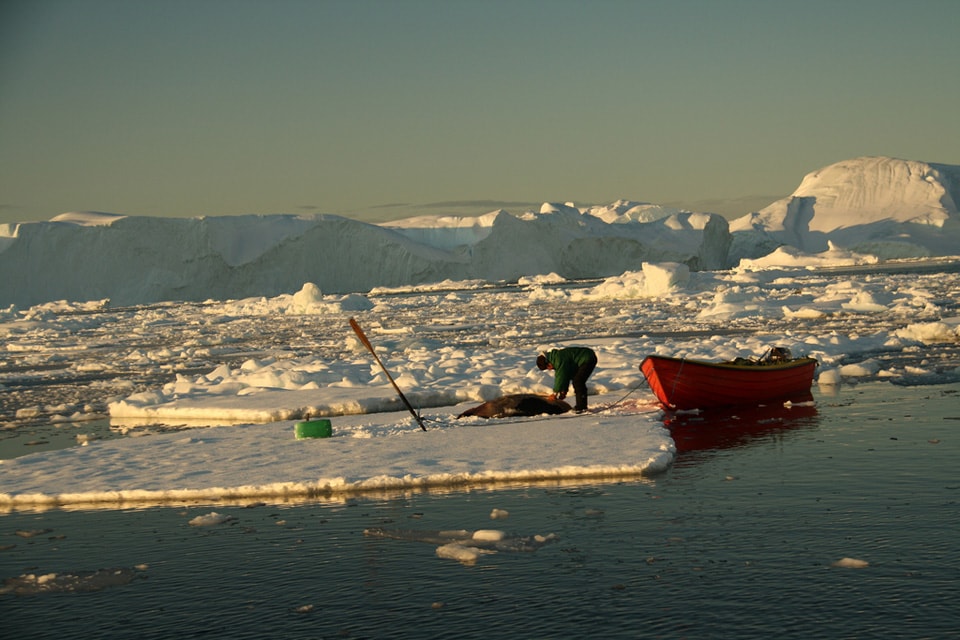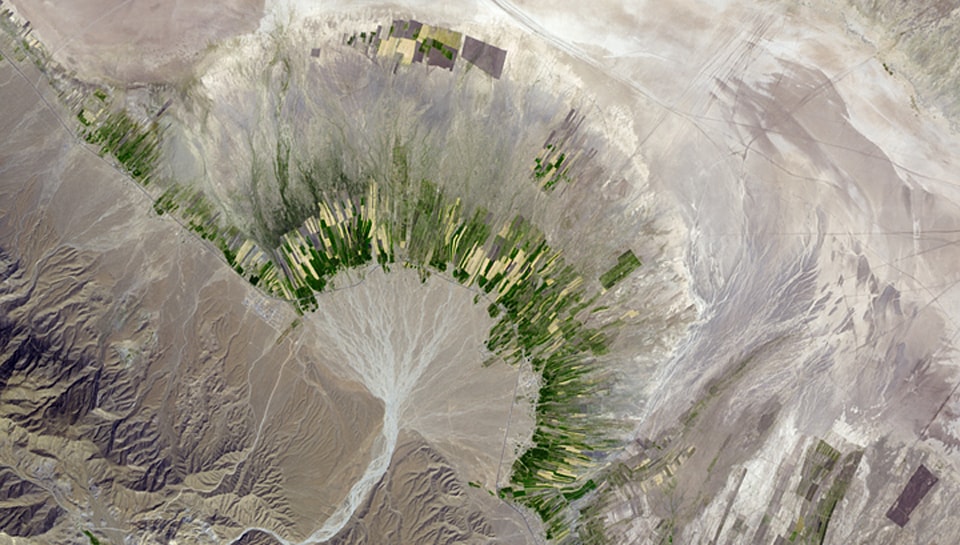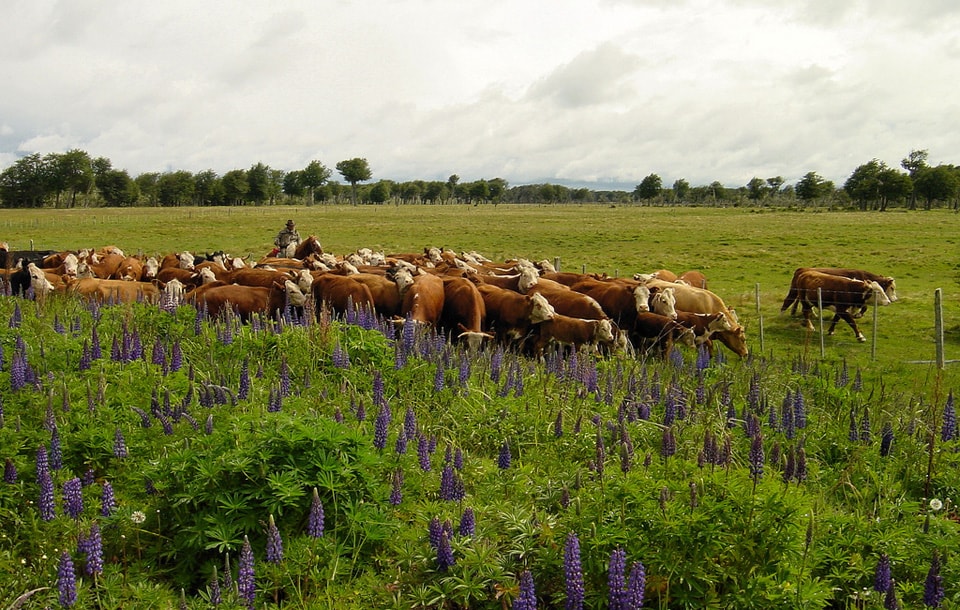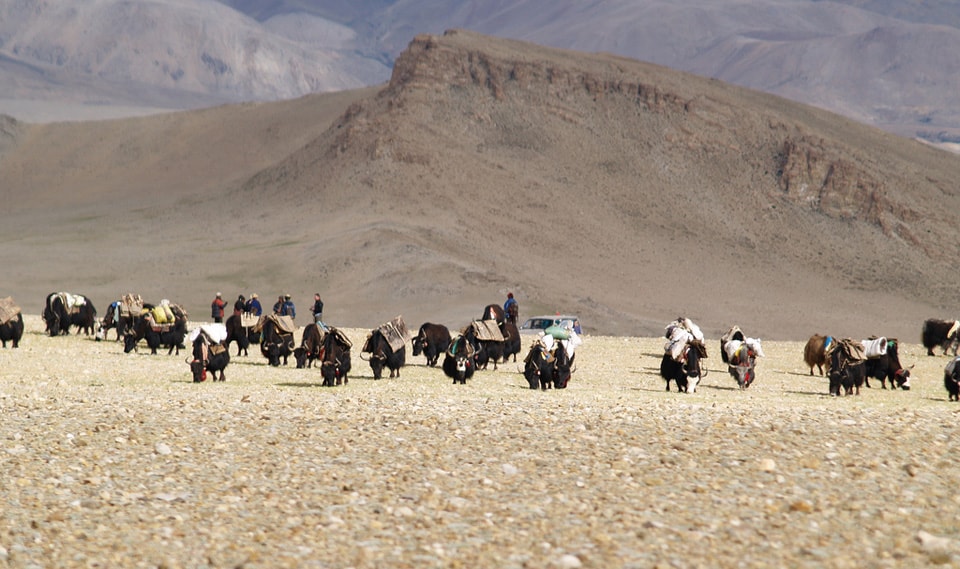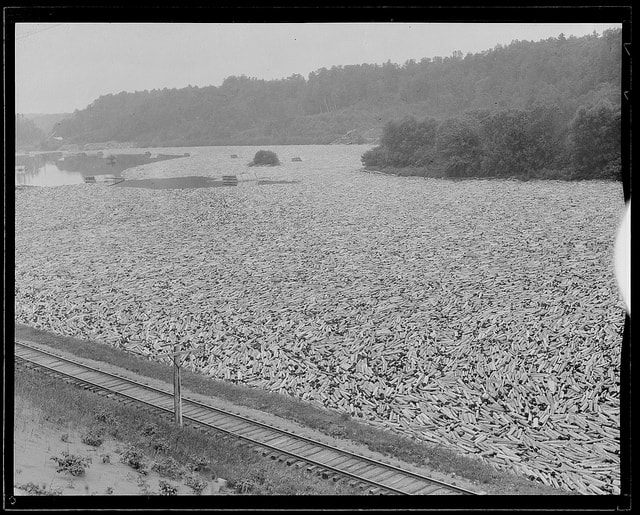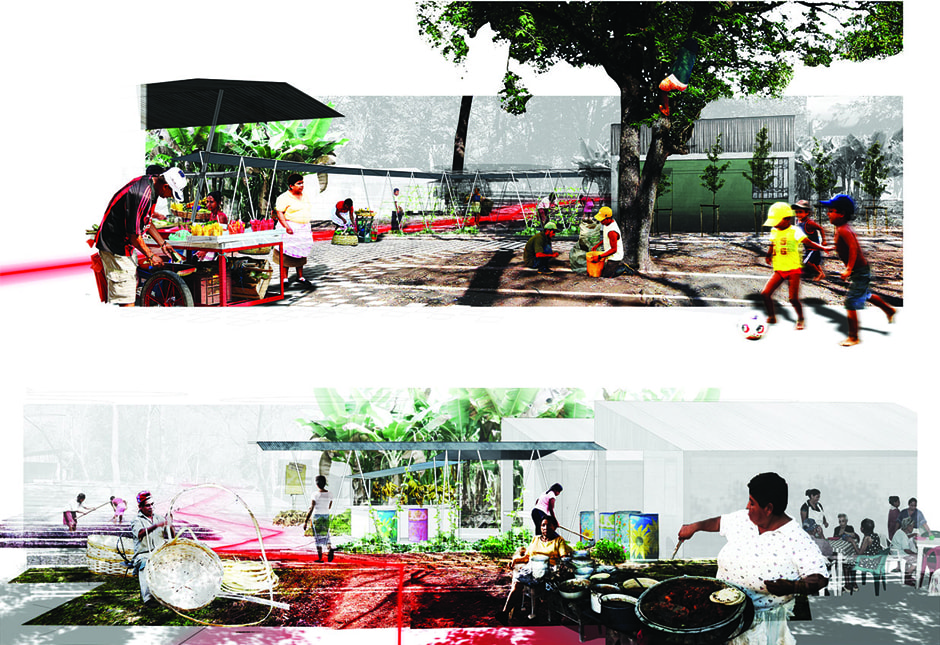The ubiquity of contemporary infrastructure cannot be overstated; it silently conveys, inhibits, facilitates, mediates, and in so doing forms the foundation of humanity’s existence. As a result, infrastructure as we know it has become both culturally and physically peripheral, resigned to crumble and rot as it waits to be replaced. In recent years, landscape historians, urban theorists, and designers have turned their gaze once again to focus on the vast networks of infrastructure that underlie our cities and metropolises in order to begin to address the ever increasing pressures placed on contemporary cities and the innumerable biophysical systems with which they interface. The study of infrastructure as an industrial urban phenomenon, however, neglects millennia of infrastructural practice in the city, its periphery, and far beyond. It is necessary to recontextualize landscape, the common medium for human inhabitation, as infrastructure; a practice inexorably tied to the history of human civilization.
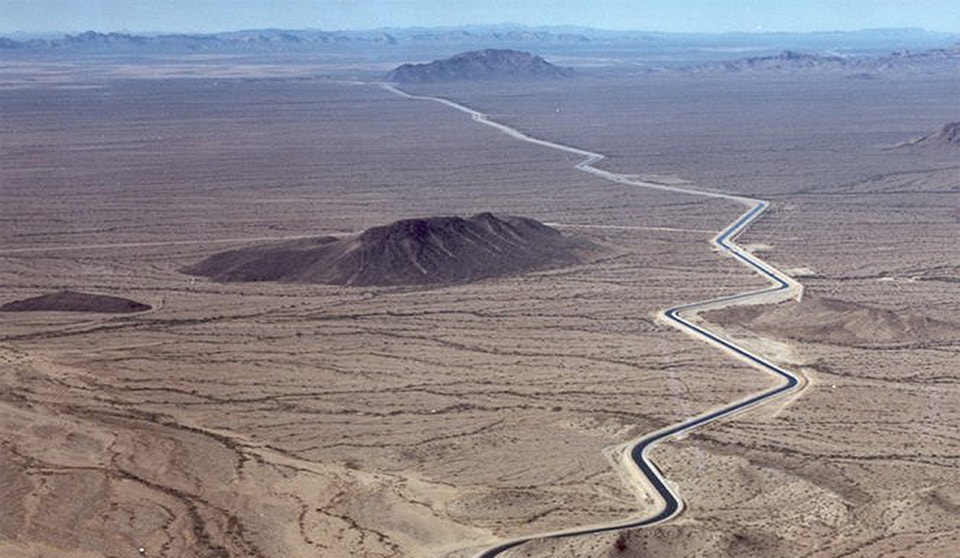 Introduced hydrology: The Central Arizona Aqueduct is a 336 mile canal that diverts water from the Colorado River in order to irrigate a million acres of farmland in central Arizona and to provide municipal water in Pheonix and Tucson. Image by USBR on Flickr.
Introduced hydrology: The Central Arizona Aqueduct is a 336 mile canal that diverts water from the Colorado River in order to irrigate a million acres of farmland in central Arizona and to provide municipal water in Pheonix and Tucson. Image by USBR on Flickr.
For the purpose of this discussion, infrastructure can be defined as those systems, works, and networks upon which the function of any system of human inhabitation is reliant. According to Bhatia, it has become apparent that “the natural environment is perhaps the only issue that affects all of humanity equally,” and a renewed “emphasis on the collective natural environment repositions the role of infrastructure as the foundational spatial format, as it allows for the interconnection between the human and environmental spheres [1]. Landscape is Bhatia’s infrastructure. Landscape is inherently infrastructural: it mediates, produces, facilitates, and transports. As a network of infrastructural function and flow, landscape (here considered to be a result of human modification of an environment) becomes the operative platform of human existence; where landscape exists, so does infrastructure. Landscape is the medium through which culture, society, and the individual interact with biophysical, meteorological, and geological fluctuation or stasis. Landscape is a conduit, an exaggerator, a proliferator, an inhibitor, an enabler; herein lies its timeless operative capacity.
Evolving platform: Ice floes serve as an ephemeral productive platform in the Arctic, continually moving, forming, and melting. Image by oh contraire on Flickr.
In his piece “Redefining Infrastructure,” Pierre Belanger proposes the replacement of this state of infrastructure with an infrastructural system aligned with ecology and other biophysical systems, recognizing that “the economy is now inseparable from the environment” [2]. While this piece sets the stage for this new proposal, it does so without referencing several key components of infrastructure and its history. Belanger, in his recent work, operates with a much more narrowly defined definition of infrastructure, limiting it to “the set of systems, works, and networks upon which an industrial economy is reliant—in other words, the underpinnings of modern societies and economies,” and as “the basic system of essential services that support a city, region, or nation” [3]. Systems of transport, water, commerce, and production are these underpinnings, the “system of essential services.”
Belanger argues that, in the era of the megalopolis and industrial state, infrastructure has gained a new degree of visibility and complexity which separates it from the entire pre-industrial history of human life and culture. This perception, perhaps largely due to disastrous infrastructural failures as discussed in the piece, is flawed [4]. Infrastructure is an inherently human and cultural phenomenon not limited to industrial and contemporary civilization, but something which has been continuously produced and managed for millennia to sustain human civilizations of many scales and levels of technological capacity.
In “Redefining Infrastructure,” infrastructure is investigated through case study as a series of systems hard rather than soft in nature (concrete/steel/asphalt/aggregate) and largely divorced from biophysical function. Belanger’s redefinition of infrastructure proposes to reevaluate this separation. However, it is possible that Belanger’s definition and treatment of infrastructure itself contributes to the separation between “hard” and “soft” infrastructures – ignoring the historic spaces of overlap, the productive grey zones in which landscape has historically functioned as dynamic, adaptive and managed infrastructural systems. Landscape is defined by human intervention, created through the interactions of humans and a given environment. If we understand landscape to be the result of modification or utilization, and facilitation of program is the intent of modification, landscape becomes infrastructural whenever it is created. When landscape is modified and inhabited, it becomes the medium through which humanity can produce, move, and live. As landscape fulfills these roles, it becomes infrastructural. By proposing the integration of ecology and economy, as well as the creation of synergistic design through “interconnectivity and interdependence,” Belanger suggests the necessity to understand landscape, and the processes and systems which inhabit it (such as ecology) as an operative infrastructural ground [5]. Through this understanding, Belanger’s proposal to integrate contemporary infrastructure with biophysical systems can transcend the reappropriation of current infrastructural typologies to develop an infrastructural proposal utilizing landscape as operative ground.
Delving deep: A qanat system in an Iranian desert tunnels deep into the mountain profile, tapping subterranean water for agricultural use where water is otherwise unavailable. NASA image created by Jesse Allen, using data from NASA/GSFC/METI/ERSDAC/JAROS, and the U.S./Japan ASTER Science Team.
Infrastructure, by definition, sustains and defines all human settlement and activity. For example, a series of canals to a remote farmstead provides an essential service in the form of irrigation, thus becoming infrastructural, and in turn represents part of a much larger system of food production and distribution vital to the support of human settlements. Even a network of fruit trees connected by footpaths is an infrastructural network; a physical intervention and selective management regime designed to provide essential services (production of food) to a specific population. In Nicaragua, harvesting of fruits from the tamarind tree results in the emergence of an ephemeral landscape infrastructure as the ground underneath each tree is cleared before harvesting, resulting in network of circular clearings below the dense tree canopy. Transhumance practices, such as the veranadas of South America, also create a landscape infrastructural network defined by seasonal and climatic flux through the movement of livestock to different seasonal pastures.
Livestock ranchers in South America, shown here in Chile’s Tierra del Fuego, undertake seasonal journeys, or veranadas, to bring livestock to winter pasture in the high mountains. Image by Robert Cutts on Flickr.
The Indomitable Yak: Yaks are able to survive in the arid, high altitude climate of the Tibetan plateau and provide many Tibetans with myriad supplies and products which are integrated into daily life. Image by Steve Hicks on Flickr.
Recent urging for a new ecological infrastructure that integrates biophysical systems and engineered, infrastructural elements could more accurately be described as a re-integration of ecology, landscape and infrastructure in the city. Oyster-tecture and A New Urban Ground, projects completed for the MOMA Rising Currents exhibition of 2010 by Scape Landscape Architects and ARO/dlandstudio, are canonical examples which recognize biophysical function as an integral component of the survival of the city.
By calling for reintegration rather than integration, the diverse and complex history of human infrastructural works is recognized. The cradles of civilization in Mesopotamia, Egypt, Indus Valley, and Yellow River valley provide a strong precedent. For these civilizations, the river was the infrastructural backbone of life. Each culture was initially defined by a river which provided transportation, irrigation, and fertility. Although human interventions during the initial evolution of civilization were relatively minor compared to contemporary infrastructural systems, the infrastructure of the ancient world was no less integral to human survival and prosperity. For example, use of a river by a fishing boat transforms it into an infrastructural entity through the introduction of a system of production derived from the landscape, and this system of production was part of a much larger network of food provision. The Tigris, Euphrates, Indus, Yellow, and Nile rivers were the physical operative platform for the systems which provided basic services and necessities for each civilization.
The river, reimagined: Maine’s Kennebec River, one of the many worldwide to be utilized as an infrastructural conduit for transit. Image by Leslie Jones, 1922. Courtesy of Boston Public Library Digital Collection.
Road infrastructure, perhaps the most ubiquitous infrastructure of the contemporary era, has a deeply historical presence in the evolution of the human narratives of commerce, industry, governance, and communication. Although historical road infrastructure tended to be limited in function, typically intended for imperial, commercial, and military purposes, its scale was at times no less grand or complex than that of the industrial age. Roman roads, the Silk Road and its caravanserai network, the Persian royal road, and even Saharan trade routes were far-flung trade and transportation networks designed to facilitate the movement of troops and goods (usually accompanied by ideas), much like the American highway system. For example, the Persian royal road was the backbone of the empire’s communication system, providing an official conduit for the movement of goods, imperial edicts, and messages [6]. Rest houses were located at every twelfth mile and stocked with fresh horses to expedite transport. The planning of the road even responded to biophysical conditions, having been diverted in various locations to avoid lands which were subject to frequent flooding [7]. These highly complex systems were integral to the function of the imperial state, and as such can be considered infrastructural.
The Silk Road, stretching through Asia and Europe for many centuries, is perhaps the most intriguing precedent of a vast infrastructural network that transcended regional, cultural, and religious boundaries. The Silk Road was a network on which innumerable economies were reliant, playing instrumental roles in the movement of goods overland through vast territories. Although the trade routes of the Silk Road were often little more than a trail through the mountains or a directional heading, the network enabled the integration of a vast Eurasian network of production and consumption. In addition to a network of connection vectors, the route was punctuated by a point matrix of caravanserai which facilitated the movement of goods by providing secure lodging, storage, and a site for cultural and commercial exchange [8]. Understanding the Silk Road as a commercial infrastructure meant to facilitate trade and exchange, as well as the smaller, peripheral infrastructural networks which allowed it to function, allows us to again consider a definition of infrastructure as “those systems, works, and networks upon which the function of any system of human inhabitation is reliant.”
Although none of the economies served by the Silk Road were industrial, it was undoubtedly a system upon which these economies, and the economy of Eurasia as a whole, were heavily reliant. Goods and money were not the only things being exchanged along this trade route; the Silk Road was also largely responsible for the evolution of several syncretic cultures in Central Asia, aided by the presence of numerous monasteries along the great roads which facilitated the spread of Buddhism, Islam, and Nestorianism [9]. Khotan emerged as one of these syncretic city-states, becoming a merchant crossroads for the silk and jade trade as China reached beyond its western borders toward Parthia and Bactria [10]. This cultural evolution demonstrates the capacity of landscape infrastructure to act as a strategic agent of culture through facilitation of movement, an argument well articulated in the work of Simon Swaffield [11]. As with contemporary infrastructural networks, the complexity and dynamism of these pre-industrial networks was so vast that it was almost impossible to understand them as single systems, perhaps because such a thing is almost mythological in its rarity; both ancient and modern infrastructures are inclusive of many systems and complexities.
While the industrial revolution may have exacerbated the apparent conflict between economy and ecology, as noted by Belanger, this seemingly intractable tradeoff is not a historic constant. We can also look to historical infrastructure to provide precedents of balanced ecological environmental and economic function long before the onset of the industrial age [12]. For example, the chinampa agricultural system of the Aztec capital Tenochtitlan was formed by a series of canals which provided continuous subsurface irrigation to island agricultural plots fertilized by nutrient-rich muck from the bottom of Lake Texcoco. By utilizing the existing network of biophysical systems and creating an infrastructural landscape specifically designed for this production system, the chinampas were able to produce an astounding amount of crop yields (up to seven crops of corn per year) [13]. Not only was the provision of food an infrastructural system in itself, but the series of canals joining the chinampas allowed goods to be directly taken to market via waterway in addition to providing fertilization and irrigation.
In North America, the agricultural systems of the Eastern woodlands Indians are also a valuable precedent of infrastructure and ecology functioning closely in tandem. Through the introduction of a dense and continually evolving matrix of forest burns, these Indians created a continuous infrastructural surface designed to produce food and facilitate movement of people and game through vast areas of edge habitat and managed production zones. This burning regimen recognized temporal flux, seasonal or otherwise, as a critical component of landscape and infrastructural process (the production and supply of food), resulting in varying types of cultivation and gathering through seasons, etc. [14]. The burn matrix actively facilitated the accumulation of soil organic matter, increased growth rates and opportunities for gatherable plant species, and increased edge habitat for game species. Successful management ensured that this system was propagated in conjunction with biophysical function. If infrastructure is to be defined as “the basic system of essential services that support a city, region, or nation,” every element of the eastern woodlands agricultural system can be seen as infrastructure.
La Prusia: Growth defined by adjacency and productive capacity. Image by Dane Carlson, 2012.
Increasing magnitudes of hydrological, meteorological, and geological flux have revealed many of our vulnerabilities as builders and inhabitors of landscape. Within this context, the precept of planning for failure through adoption of systems “reliant on a culture of contingency and preparedness” identified by Belanger is increasingly becoming recognized as necessary, potentially providing a framework for a systematic response to all degrees of flux [15]. Flux is process, whether it be succession of plant communities or changing of the seasons, and “process engages the dynamic conditions of the landscape—living material that changes over time” [16]. The reference to living material is not limited to plant matter, but also water, soil, biota, and every other minute component of landscape. All of these components are integral to the function of landscape as an infrastructural platform defined by process and change. Flux may be gradual or cyclical, but it also has the potential to be violent and immediate. Fisher acknowledges a recent history of disasters caused or exacerbated by ignorance of potential flux or attempts to prevent, rather than adapt to, fluctuation; perhaps most notably the post-Katrina flooding of New Orleans in 2005 [17]. These failures stem from what Fisher defines as fracture-critical design, “in which structures and systems have so little redundancy and so much interconnectedness and misguided efficiency that they fail completely if any one part does not perform as intended [18].
Landscape is not purely a temporal or biophysical phenomenon; culture is an integral component in the formation of both landscape and the infrastructural systems which transverse it, many of which are unique to place and people. Denis Cosgrove says of J.B. Jackson: “more evident perhaps is the influence of his consistent demonstration that landscapes emerge from specific geographical, social, and cultural circumstances; that landscape is embedded in the practical uses of the physical world as nature and territory” [19]. These “practical uses of the physical world” are infrastructural: transport, production, mediation, facilitation. The geographic, social, and cultural origins of landscape, as stated here by Cosgrove, mark landscape and infrastructure as human, not pre or post- industrial, and rooted (in origin) in biophysical systems specific to place and time.
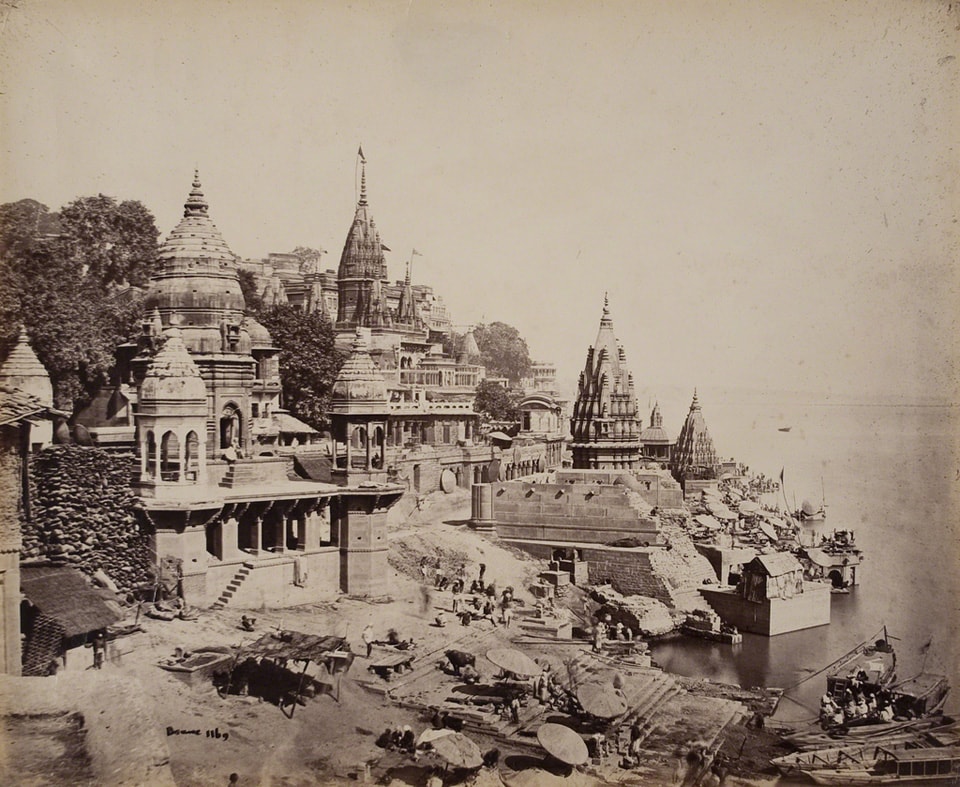 Ritual infrastructure: Ghats, seen here on the Ganges at Varanasi, perform many ritual functions for Hindu adherents. Image by Samuel Bourne, 1865.
Ritual infrastructure: Ghats, seen here on the Ganges at Varanasi, perform many ritual functions for Hindu adherents. Image by Samuel Bourne, 1865.
The recent trend of soft infrastructure proposals and “ecologically driven landscape infrastructure proposal is necessary and timely, but tends to be limited in scope and ambition through the overemphasis of an artificially bounded urban condition. Understanding infrastructure as an industrial or urban phenomenon limits the potential of infrastructure to be redefined, essentially only allowing us to reevaluate existing infrastructural typologies. Expanding our view to include historical precedents of both pre-and post-industrial infrastructures and landscape may serve to elucidate potential intersections between infrastructure and biophysical, meteorological, and geological systems, providing fertile ground for the expansion of infrastructure that is defined by landscape rather than the reverse.
By understanding landscape as the operative ground for infrastructure, and any landscape intervention as inherently infrastructural, our ability to radically redefine infrastructure is expanded and solidified. Recognition of the combined cultural and biophysical parentage of infrastructure also brings historical case study (beyond the industrial age) to a point of particular relevance. Integration of infrastructure with biophysical systems is not a phenomenon limited to a potential future, but has been achieved on a significant scale for thousands of years; rather than discovering this anew, we have the opportunity to rediscover biophysical infrastructure as an integral component of landscape.
 Dane Carlson is a landscape architectural designer currently pursuing an MLA at Harvard’s Graduate School of Design, and received his Bachelor of Landscape Architecture from the College of Architecture and Planning at Ball State University in 2011. Currently working to investigate landscape as a productive cultural phenomenon through design and research, his interests vary geographically from Chilean Patagonia to Nepal. As a Community Service Fellow at the Graduate School of Design, Dane will pursue the development of productive cultural landscape design in sub-Saharan Africa at MASS Design Group in Boston.
Dane Carlson is a landscape architectural designer currently pursuing an MLA at Harvard’s Graduate School of Design, and received his Bachelor of Landscape Architecture from the College of Architecture and Planning at Ball State University in 2011. Currently working to investigate landscape as a productive cultural phenomenon through design and research, his interests vary geographically from Chilean Patagonia to Nepal. As a Community Service Fellow at the Graduate School of Design, Dane will pursue the development of productive cultural landscape design in sub-Saharan Africa at MASS Design Group in Boston.

